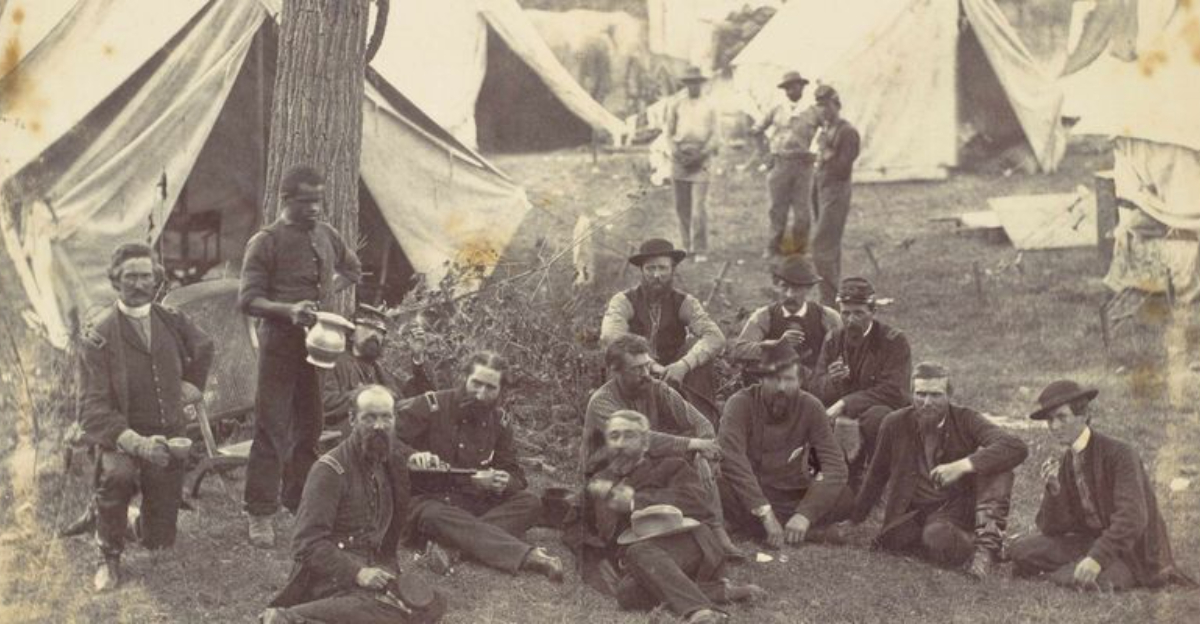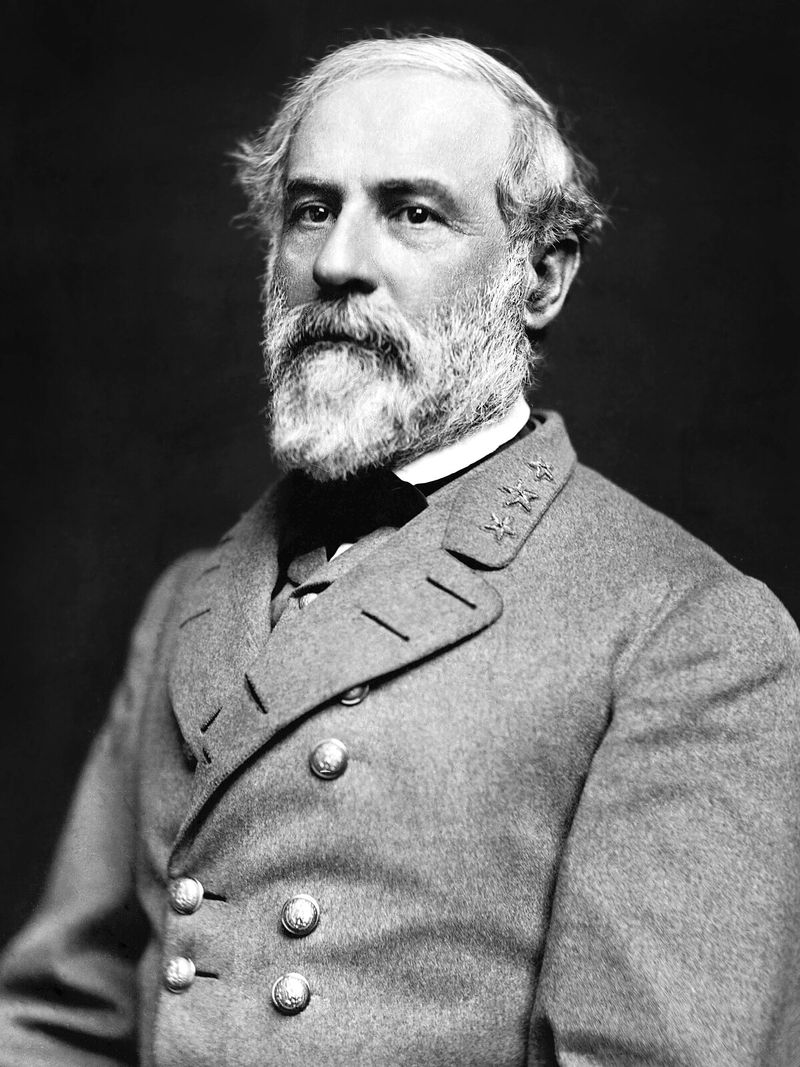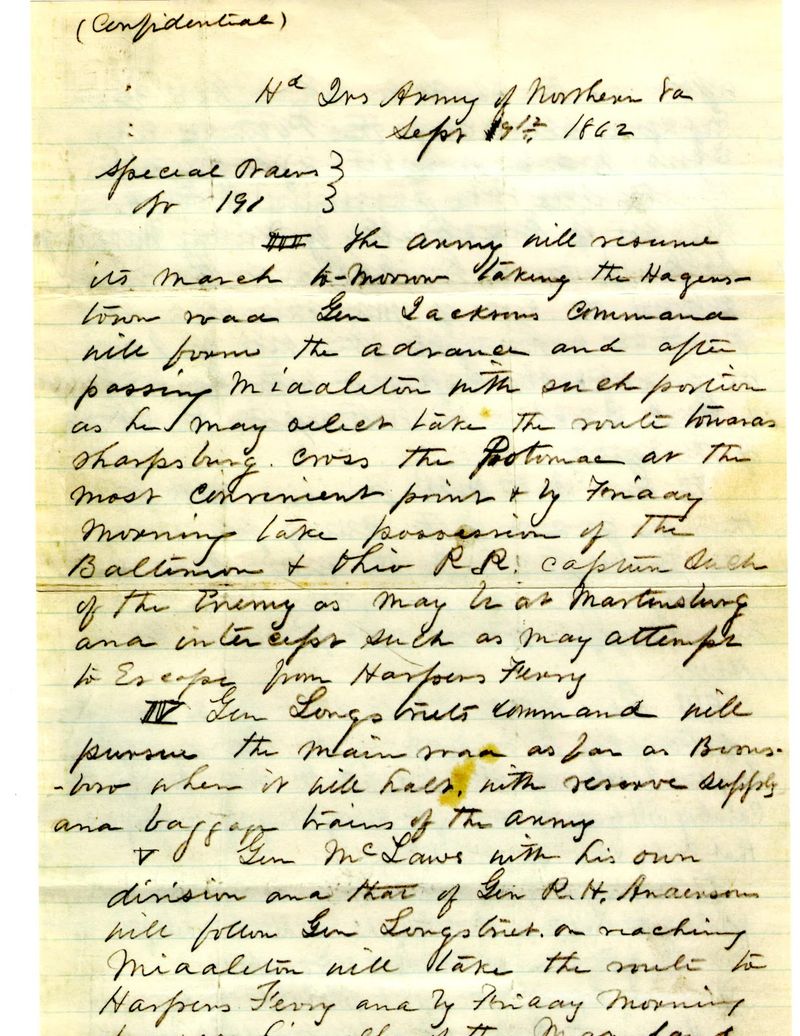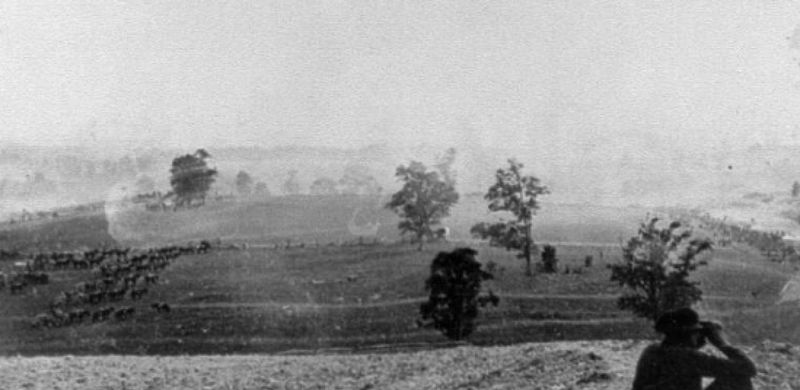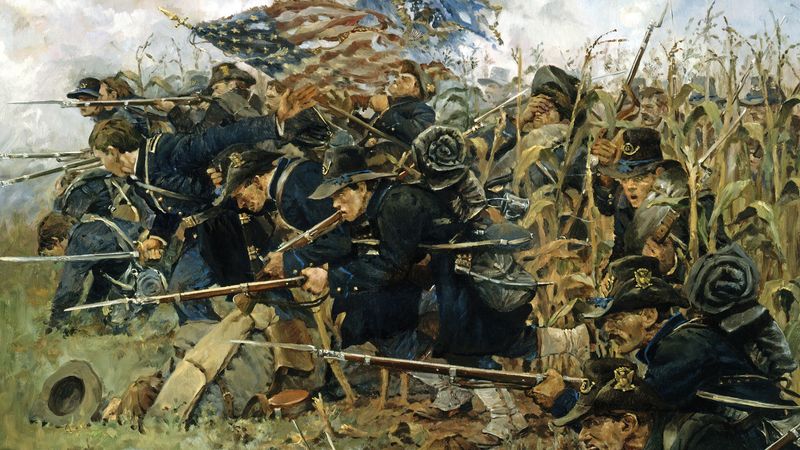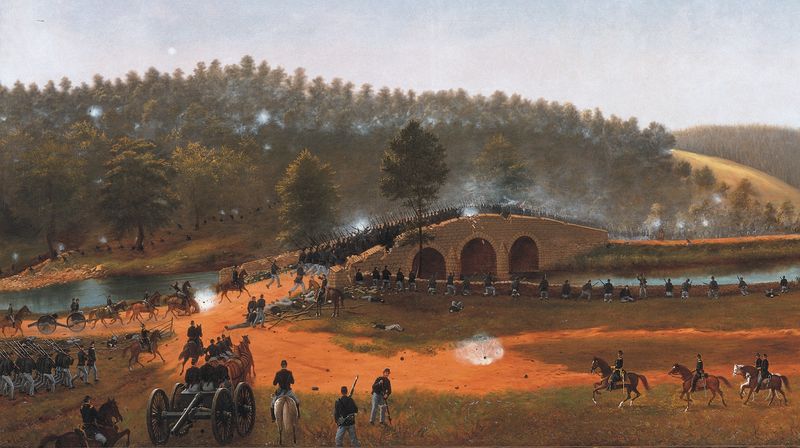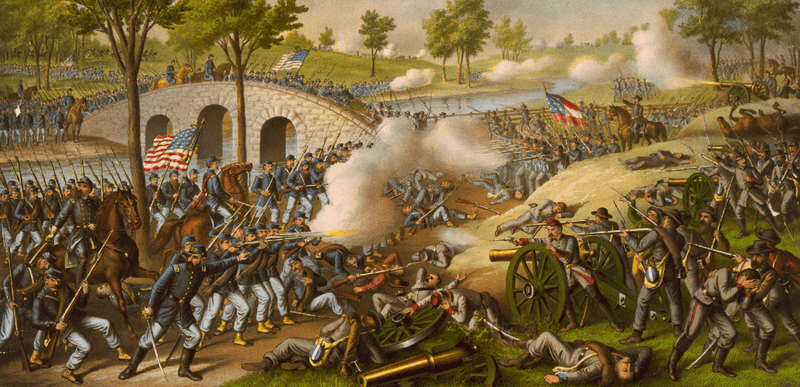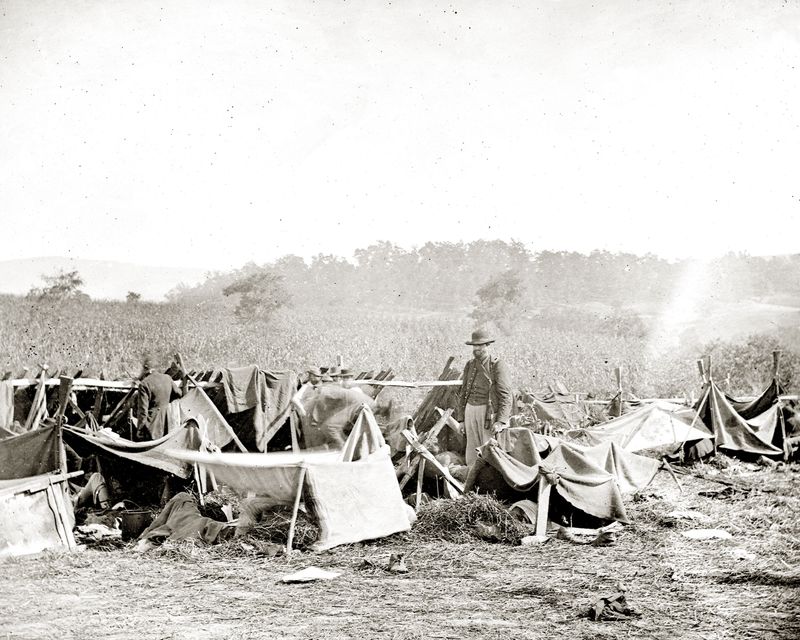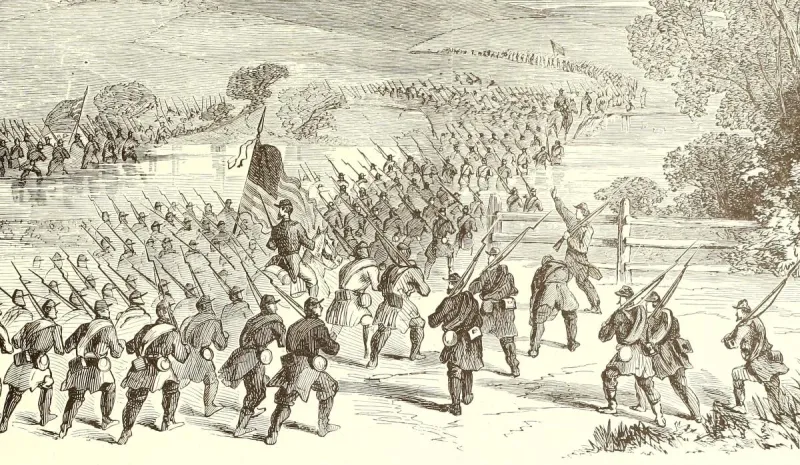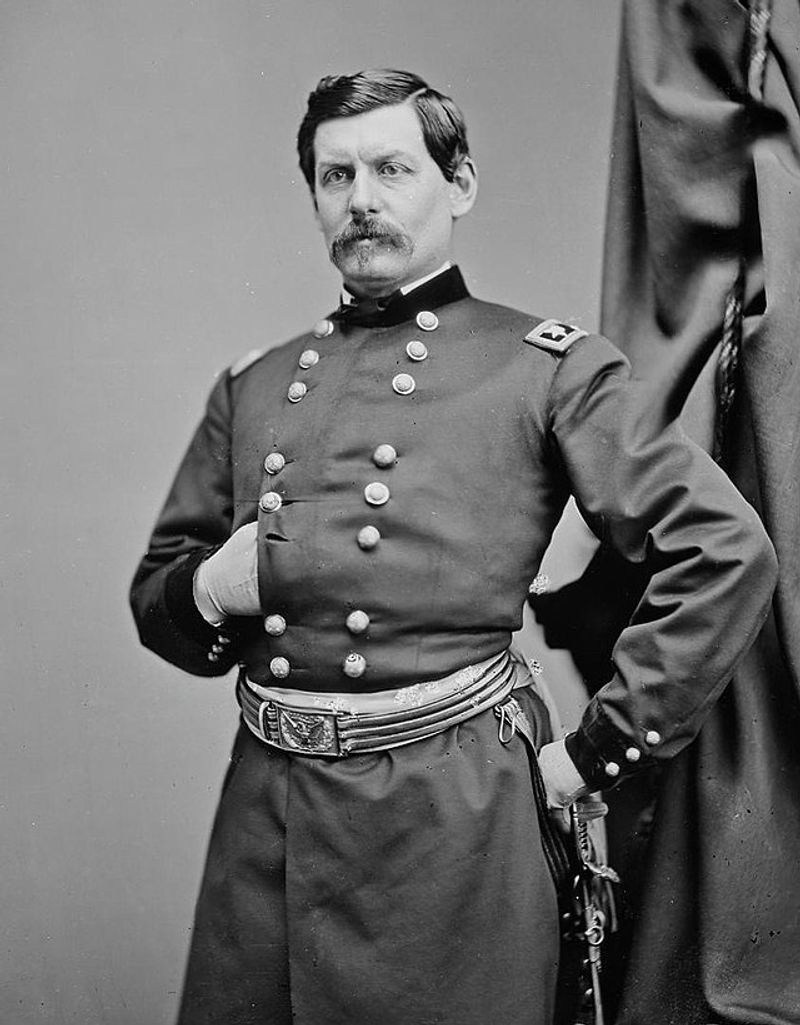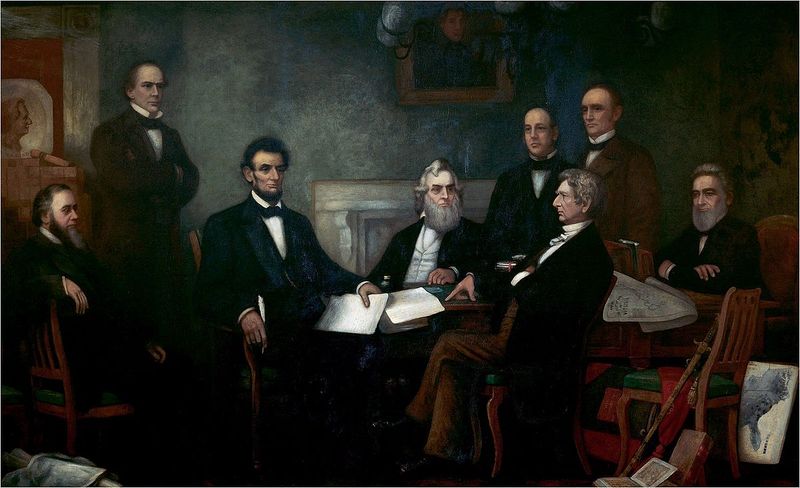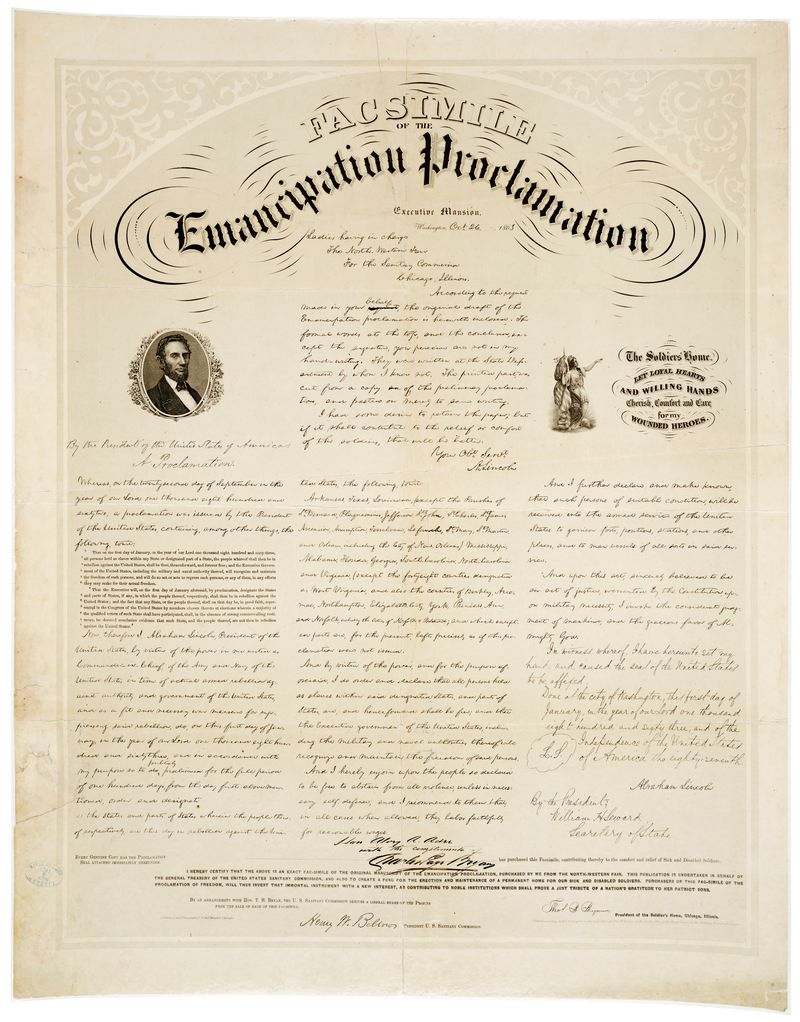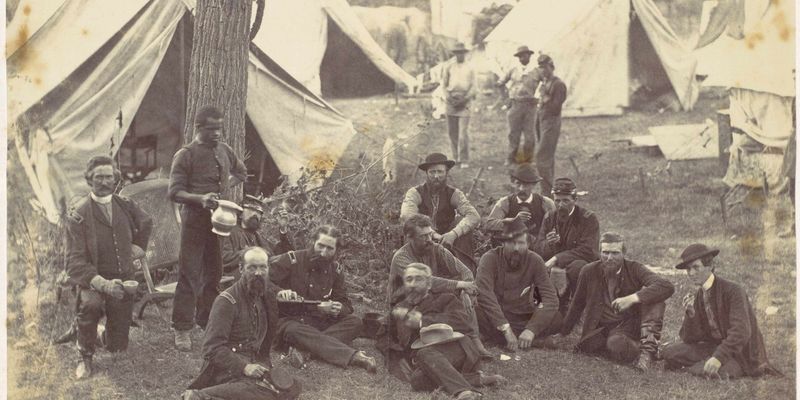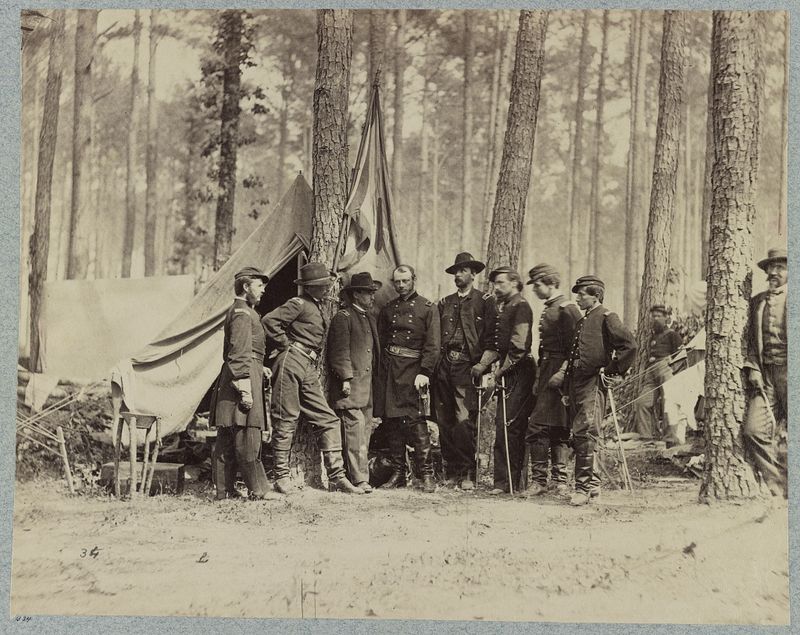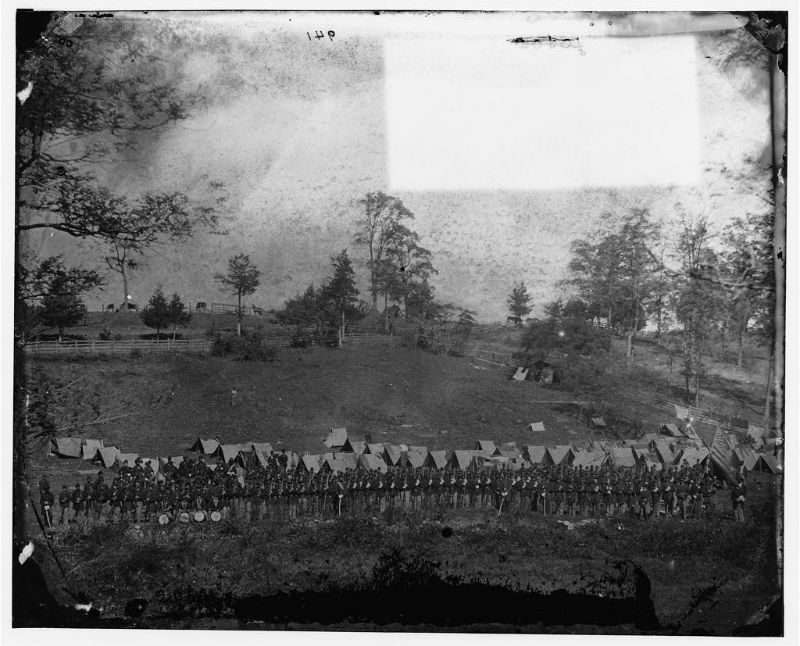On September 17, 1862, two massive armies collided near Sharpsburg, Maryland, in what would become the bloodiest single day in American history. The Battle of Antietam was a clash not just of men and arms, but of ideals—Union vs. Confederacy, freedom vs. slavery, and the fate of the nation itself. These 15 pivotal events reveal how the day unfolded and why Antietam forever altered the course of the Civil War.
1. Lee’s Invasion of the North Begins
In 1862, Confederate General Robert E. Lee embarked on a daring invasion of the North. With ambitions to sway border state loyalties, he hoped to gain foreign recognition and secure a victory on Union soil. The bold move aimed to shift the war’s balance, potentially altering its outcome.
Crossing into Maryland, Lee’s forces were poised and determined, seeking to deliver a morale-shaking blow. The invasion marked a critical juncture, as both armies braced for a confrontation that would reverberate throughout history. This strategic gamble set the stage for the events at Antietam.
2. The Lost Order That Changed Everything
A twist of fate occurred when Union soldiers stumbled upon Confederate marching orders wrapped in cigars. This intelligence windfall handed Union General George B. McClellan an unprecedented look into Confederate plans. Yet, despite the advantage, McClellan hesitated, unsure of the information’s validity.
The discovery, known as the Lost Order, could have altered the war’s pace dramatically. McClellan’s cautious nature led to missed opportunities, underscoring the importance of decisive action in warfare. The incident remains a poignant lesson in military history.
3. McClellan’s Slow Advance
Despite possessing Lee’s full battle plan, Union General George B. McClellan moved with frustrating caution. This slow advance allowed Confederate forces to regroup and concentrate near Sharpsburg. Many saw McClellan’s hesitance as a significant missed opportunity.
Critics argue that his delays gave the Confederacy a fighting chance they shouldn’t have had. His cautious approach created tension within the Union ranks, as time and opportunity slipped away. McClellan’s decisions during this period remain a subject of debate among historians.
4. A Dawn Assault at the Cornfield
As dawn broke over the Antietam battlefield, Union troops charged into a field of towering corn. The clash was fierce and relentless, as control of the field shifted repeatedly during a chaotic dance of musket fire and bayonets. The cornfield soon turned into a scene of horror, soaked in blood.
Over three brutal hours, the battle ebbed and flowed, leaving a lasting scar on the landscape and the soldiers who fought there. The Cornfield’s name would forever be etched in history as a testament to relentless courage and immense sacrifice.
5. The Bloody Lane Becomes a Death Trap
Around midday, Union forces launched a determined assault on a sunken farm road held by Confederate troops. This area, later called “Bloody Lane,” became a gruesome slaughterhouse. Defenders were overwhelmed as Union forces pressed on with relentless determination.
Over 2,600 Confederate soldiers fell in the brutal engagement before the line finally broke. The Bloody Lane stood as a stark symbol of the battle’s ferocity and the staggering human cost of war, marking a pivotal moment in the unfolding drama of Antietam.
6. Burnside’s Bridge Bottleneck
In the battle’s southern sector, Union General Ambrose Burnside faced a formidable challenge. His troops struggled to cross a narrow stone bridge fiercely defended by a small but determined Confederate force. The bottleneck created by “Burnside’s Bridge” led to hours of frustrating delay.
This tactical obstacle stalled a crucial flanking maneuver, as Union soldiers faced fierce resistance. The bridge became a symbol of the difficulties and setbacks faced by the Union side during the battle. Burnside’s efforts, though valiant, were fraught with challenges.
7. A Last-Minute Confederate Reinforcement
Just as Union General Burnside’s men were breaking through Confederate lines, reinforcements under A.P. Hill arrived dramatically from Harpers Ferry. This timely intervention executed a counterattack that drove the Union forces back, saving Lee’s right flank from collapse.
The unexpected arrival of fresh Confederate troops turned the tide in a critical sector of the battlefield. The reinforcements underscored the unpredictability of warfare, adding a twist to Antietam’s unfolding narrative. Hill’s timely actions would prove essential in maintaining Confederate positions.
8. 12 Hours, 23,000 Casualties
In just 12 hours, the Battle of Antietam left more than 23,000 men killed, wounded, or missing. This staggering number cemented the day as the single bloodiest in U.S. military history. The aftermath was a sobering testament to the battle’s ferocity and the immense human cost.
Scenes of chaos and desperation unfolded in makeshift field hospitals, where overworked surgeons raced against time. The sheer scale of the casualties highlighted the brutal reality of war, leaving a profound impact on the nation’s consciousness.
9. Lee Holds—But Retreats
Despite withstanding multiple Union assaults, General Lee’s army faced a critical dilemma. Vastly outnumbered and short on supplies, Lee made the tough decision to retreat. On the night of September 18, 1862, his forces quietly withdrew across the Potomac River.
The retreat marked the end of Lee’s ambitious northern campaign, as the Confederates regrouped after their costly confrontation. Although they held the field, the strategic withdrawal underscored the limitations faced by the Confederate army. Lee’s decision was a testament to his strategic acumen.
10. McClellan Lets Him Go
Having the advantage, General McClellan faced a pivotal decision as Lee’s army retreated. However, his failure to aggressively pursue the Confederates was seen as a critical oversight. Critics argue that this missed opportunity might have shortened the war.
McClellan’s cautious nature once again played a role, as he hesitated to capitalize on his position. The decision not to pursue remains a contentious topic among historians, highlighting the complexities of leadership and decision-making in warfare.
11. Lincoln Seizes the Moment
In the wake of the battle, President Abraham Lincoln seized the moment to issue a game-changing order. Although Antietam’s outcome was tactically inconclusive, Lee’s retreat provided Lincoln with the momentum he needed.
With a sense of urgency, he drafted the preliminary Emancipation Proclamation. This bold decision forever altered the war’s moral and political stakes. Lincoln’s actions showcased his leadership and vision, as he used the opportunity to redefine the Union’s purpose, making a stand for freedom and equality.
12. The Emancipation Proclamation Is Announced
On September 22, 1862, five days post-Antietam, President Lincoln announced the Emancipation Proclamation. This landmark declaration aimed to free enslaved people in Confederate states, transforming the war’s moral dimension.
The proclamation was a significant turning point, altering both international and domestic perspectives. Lincoln’s announcement redefined the Union’s fight, emphasizing liberty and human rights. The Emancipation Proclamation remains a cornerstone in America’s journey toward equality, highlighting Lincoln’s enduring legacy.
13. Foreign Recognition of the Confederacy Falters
Before Antietam, Britain and France were contemplating recognizing the Confederacy. The battle—and subsequent Emancipation Proclamation—shifted international opinion significantly.
Public sentiment in Europe swayed, as the Confederacy’s hopes for diplomatic recognition waned. The events at Antietam and Lincoln’s bold proclamation underscored the shifting nature of global politics during the Civil War. This turning point disrupted Confederate aspirations, reinforcing the Union’s position on the world stage.
14. Photography Captures the Horror
Photographers Mathew Brady and Alexander Gardner captured Antietam’s aftermath, bringing the stark reality of war to the public. Their images were among the first battlefield photos widely seen, shocking audiences with their vivid portrayal.
These haunting photographs conveyed the grim truth, transforming public perception of the conflict. The power of photography played a crucial role in shaping societal views, illustrating the war’s harsh consequences. The visual documentation of Antietam marked a pivotal moment in media history.
15. The War Would Never Be the Same
Antietam’s impact resonated far beyond the battlefield. Although it didn’t end the Civil War, it fundamentally changed its trajectory. The battle concluded Lee’s first northern campaign, providing Lincoln the necessary momentum for emancipation.
This pivotal moment redefined the Union’s fight, emphasizing freedom and equality. The war’s direction shifted significantly, as both sides grappled with its evolving stakes. Antietam’s legacy endures, symbolizing a turning point in America’s quest for unity and justice.
